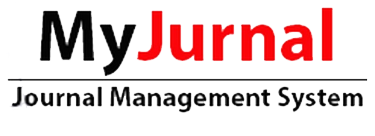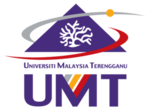HARNESSING MARINE INVERTEBRATES: THE EXTRACTION TECHNIQUES OF COLLAGEN
DOI:
https://doi.org/10.46754/ps.2025.01.003Keywords:
marine collagen, collagen extraction, marine invertebrates, crustaceansAbstract
Marine resources offer a sustainable alternative to conventional protein and nutrient sources with marine collagen playing an important role in functional foods and nutritional supplements. Collagen from marine invertebrates is widely used in the food industry, pharmaceutical products, and biomedical applications. The aim of this study is to study the techniques used to extract collagen from various marine invertebrates. Marine collagen is a structural protein characterised by a helical structure composed of amino acids like glycine, proline, and hydroxyproline. Collagen comprises of 28 different types but only four types: Type I, II, III, and IV have always been studied. Type I is obtained from skin, tendon, and bone, meanwhile Type II is obtained from tissues of vitreous body, cartilage, and nucleus pulposus. Type III is obtained from the vessel walls and reticular fibres of lungs, spleen, and liver and Type IV is obtained from basement membranes. The extraction of marine collagen involves three stages: Pretreatment, extraction, and recovery. Several marine collagen extraction techniques are commonly used, including acid soluble collagen, pepsin soluble collagen, carbon dioxide acidified water, and alkaline denaturing procedures. Different extraction methods produce collagen yields with varying chemical compositions and characteristics. All of the extraction processes are ethical and environmentally friendly.
References
Agbaje, O. B. A., Dominguez, J. G., & Jacob, D. E. (2021). Organic biopolymers of venus clams: Collagen-related matrix in the bivalve shells with crossedlamellar ultrastructure. Biochemistry and Biophysics Reports, 26, 100939. https://doi.org/10.1016/j.bbrep.2021.100939
Ahmed, M., Verma, A. K., & Patel, R. (2020). Collagen extraction and recent biological activities of collagen peptides derived from sea-food waste: A review. Sustainable Chemistry and Pharmacy, 18, 100315.
Ait Boulahsen, M., Chairi, H., Laglaoui, A., Arakrak, A., Zantar, S., Bakkali, M., & Hassani, M. (2018). Optimization and characterization of gelatin and chitosan extracted from fish and shrimp waste. E3S Web of Conferences, 37, 6-13. https://doi.org/10.1051/3sconf/20183702006
Araújo, T. A., de Souza, A., Santana, A. F., Braga, A. R. C., Custódio, M. R., Simões, F. R., Araújo, G. M., Miranda, A., Alves, F., Granito, R. N., & Yu, N. (2021). Comparison of different methods for spongin-like collagen extraction from marine sponges (Chondrilla caribensis and Aplysina fulva): Physicochemical properties and in vitro biological analysis. Membranes, 11(7), 522.
Avila Rodríguez, M. I., Rodriguez Barroso, L. G., & Sánchez, M. L. (2018). Collagen: A review on its sources and potential cosmetic applications. Journal of Cosmetic Dermatology, 17(1), 20-26.
Barros, A. A., Aroso, I. M., Silva, T. H., Mano, J. F., Duarte, A. R. C., & Reis, R. L. (2015). Water and carbon dioxide: Green solvents for the extraction of collagen/gelatin from marine sponges. ACS Sustainable Chemistry and Engineering, 3(2), 254-260.
Barzideh, Z., Latiff, A. A., Gan, C. Y., Benjakul, S., & Karim, A. A. (2014). Isolation and characterisation of collagen from the ribbon jellyfish (Chrysaora sp.). International Journal of Food Science and Technology, 49(6), 1490-1499. https://doi.org/10.1111/ijfs.12464
Berillis, P. (2015). Marine collagen: Extraction and applications. Research Trends in Biochemistry, Molecular Biology and Microbiology, 1-13.
Cao, S., Cai, J., Ying, S., Chen, T., Liu, L., Yang, H., Ma, J., He, L., & Qi, X. (2022). Characteristics comparison of collagens from squid skin by different extraction methods. Food Science and Technology (Brazil), 42. https://doi.org/10.1590/FST.69422
Cheng, X., Shao, Z., Li, C., Yu, L., Raja, M. A., & Liu, C. (2017). Isolation, characterization and evaluation of collagen from jellyfish Rhopilema esculentum kishinouye for use in hemostatic applications. PLoS ONE, 12(1), 1-21. https://doi.org/10.1371/journal.pone.0169731
Coelho, R. C. G., Marques, A. L. P., Oliveira, S. M., Diogo, G. S., Pirraco, R. P., Moreira-Silva, J., Xavier, J. C., Reis, R. L., Silva, T. H., & Mano, J. F. (2017). Extraction and characterization of collagen from Antarctic and Sub-Antarctic squid and its potential application in hybrid scaffolds for tissue engineering. Materials Science and Engineering: C, 78, 787-795. https://doi.org/10.1016/j.msec.2017.04.122
Coppola, D., Oliviero, M., Vitale, G. A., Lauritano, C., D’Ambra, I., Iannace, S., & de Pascale, D. (2020). Marine collagen from alternative and sustainable sources: Extraction, processing and applications. Marine Drugs, 18(4), 214.
Desmelati, S., Dewita, D., Syafrijal, & Sari, P. A. (2020). Determination of nano-collagen quality from sea cucumber Holothuria scabra. IOP Conference Series: Earth and Environmental Science, 430(2020), 012005. https://doi.org/10.1088/1755-1315/430/1/012005
Fassini, D., Oliveira, S. M., Silva, T. H., & Reis, R. L. (2020.) Biotechnological valorization of marine collagens: Biomaterials for health applications. Encyclopedia of Marine Biotechnology, 2, 855-883.
Ferrario, C., Rusconi, F., Pulaj, A., Macchi, R., Landini, P., Paroni, M., Colombo, G., Martinello, T., Melotti, L., Gomiero, C., Daniela Candia Carnevali, M., Bonasoro, F., Patruno, M., & Sugni, M. (2020). From food waste to innovative biomaterial: Sea urchin-derived collagen for applications in skin regenerative medicine. Marine Drugs, 18(8). https://doi.org/10.3390/MD18080414
Gökalp, M., Kooistra, T., Rocha, M. S., Silva, T. H., Osinga, R., Murk, A. J., & Wijgerde, T. (2020). The effect of depth on the morphology, bacterial clearance, and respiration of the mediterranean sponge Chondrosia reniformis (Nardo, 1847). Marine Drugs, 18(7), 358.
Hajiani, E., & Osfouri, S. (2021). Extraction and purification of collagen from the jellyfish Catostylus mosaicus of the Persian Gulf. Iranian South Medical Journal, 24(2), 88-100.
Han, S. B., Won, B., Yang, S., & Kim, D. H. (2021). Asterias pectinifera derived collagen peptide-encapsulating elastic nanoliposomes for the cosmetic application. Journal of Industrial and Engineering Chemistry, 98, 289-297. https://doi.org/10.1016/j.jiec.2021.03.039
Hiransuchalert, R., Oonwiset, N., Imarom, Y., Chindudsadeegul, P., Laongmanee, P., & Arnupapboon, S. (2021). Extraction and characterization of pepsin-soluble collagen from different mantis shrimp species. Fisheries and Aquatic Sciences, 24(12), 406-414. https://doi.org/10.47853/FAS.2021.e42
Huang, C. Y., Kuo, J. M., Wu, S. J., & Tsai, H. T. (2016). Isolation and characterization of fish scale collagen from tilapia (Oreochromis sp.) by a novel extrusion–hydro-extraction process. Food Chemistry, 190, 997-1006.
Jafari, H., Lista, A., Siekapen, M. M., Ghaffari-Bohlouli, P., Nie, L., Alimoradi, H., & Shavandi, A. (2020). Fish collagen: Extraction, characterization, and applications for biomaterials engineering. Polymers, 12(10), 2230.
Khong, N. M. H., Yusoff, F. M., Jamilah, B., Basri, M., Maznah, I., Chan, K. W., Armania, N., & Nishikawa, J. (2018). Improved collagen extraction from jellyfish (Acromitus hardenbergi) with increased physical-induced solubilization processes. Food Chemistry, 251, 41-50. https://doi.org/10.1016/j.foodchem.2017.12.083
Li, L., Yu, Y., Wu, W., & Wang, P. (2023). Extraction, characterization and osteogenic activity of a type I collagen from starfish (Asterias amurensis). Marine Drugs, 21(5). https://doi.org/10.3390/md21050274
Li, P. H., Lu, W. C., Chan, Y. J., Ko, W. C., Jung, C. C., Le Huynh, D. T., & Ji, Y. X. (2020). Extraction and characterization of collagen from sea cucumber (Holothuria cinerascens) and its potential application in moisturizing cosmetics. Aquaculture, 515, 734590. https://doi.org/10.1016/j.aquaculture.2019.734590
Luca, S., Nunzia, G., Lucia, N. M., Lorena, C., Paola, L., Marta, M., Blasi, F. S., Corallo, A., Capobianco, L., & Alessandro, S. (2020). Marine collagen and its derivatives: Versatile and sustainable bio-resources for healthcare. Materials Science and Engineering: C, 110963.
Meyer, M. (2019). Processing of collagen based biomaterials and the resulting materials properties. Biomedical Engineering Online, 18(1), 1-74.
Muthukumar, T., Sreekumar, G., Sastry, T. P., & Chamundeeswari, M. (2018). Collagen as a potential biomaterial in biomedical applications. Reviews on Advanced Materials Science, 53(1), 29-39.
Nagai, T., Yamashita, E., Taniguchi, K., Kanamori, N., & Suzuki, N. (2001). Isolation and characterisation of collagen from the outer skin waste material of cuttlefish (Sepia lycidas). Food Chemistry, 72(4), 425-429. https://doi.org/10.1016/S0308-8146(00)00249-1
Pang, S. C. F. (2016). Extraction of collagen from fish wastes, optimization and characterization [Doctoral dissertation, Universiti Tunku Abdul Rahman].
Parisi, J. R., Fernandes, K. R., Avanzi, I. R., Dorileo, B. P., Santana, A. F., Andrade, A. L., & Renno, A. C. M. (2019). Incorporation of collagen from marine sponges (spongin) into hydroxyapatite samples: Characterization and in vitro biological evaluation. Marine Biotechnology, 21(1), 30-37.
Preetha Mini Jose, H. M., Murugesan, P., Arumugam, M., & Mahesh Kumar, K. (2014). Isolation and characterization of acid and pepsin - Solubilised collagen from the muscle of mantis shrimp (Oratosquilla nepa). International Journal of Pharmacy and Pharmaceutical Sciences, 6(1), 654-657.
Saito, M., Kunisaki, N., Urano, N., & Kimura, S. (2002). Collagen as the major edible component of sea cucumber (Stichopus japonicus). Journal of Food Science, 67(4), 1319-1322. https://doi.org/10.1111/j.1365-2621.2002.tb10281.x
Schmidt, M. M., Dornelles, R. C. P., Mello, R. O., Kubota, E. H., Mazutti, M. A., Kempka, A. P., & Demiate, I. M. (2016). Collagen extraction process. International Food Research Journal, 23(3).
Silva, J. C., Barros, A. A., Aroso, I. M., Fassini, D., Silva, T. H., Reis, R. L., & Duarte, A. R. C. (2016). Extraction of collagen/gelatin from the marine demosponge Chondrosia reniformis (Nardo, 1847) using water acidified with carbon dioxide–process optimization. Industrial & Engineering Chemistry Research, 55(25), 6922-6930.
Sionkowska, A., Skrzyński, S., Śmiechowski, K., & Kołodziejczak, A. (2017). The review of versatile application of collagen. Polymers for Advanced Technologies, 28(1), 4-9.
Subhan, F., Hussain, Z., Tauseef, I., Shehzad, A., & Wahid, F. (2020). A review on recent advances and applications of fish collagen. Critical Reviews in Food Science and Nutrition, 1-11.
Syahputra, G., Hariyatun, H., Firdaus, M., & Santoso, P. (2021). Extraction and characterization of collagen from sand sea cucumber (Holothuria scabra). Jurnal Ilmu Pertanian Indonesia, 26(3), 319-327. https://doi.org/10.18343/jipi.26.3.319
Tabakaeva, O. V., Tabakaev, A. V., & Piekoszewski, W. (2018). Nutritional composition and total collagen content of two commercially important edible bivalve molluscs from the Sea of Japan coast. Journal of Food Science and Technology, 55(12), 4877-4886. https://doi.org/10.1007/s13197-018-3422-5
Tan, C. C., Karim, A. A., Latiff, A. A., Gan, C. Y., & Ghazali, F. C. (2013). Extraction and characterization of pepsin-solubilized collagen from the body wall of crownof-thorns Starfish (Acanthaster planci). International Food Research Journal, 20(6), 3013-3020.
Tziveleka, L. A., Ioannou, E., Tsiourvas, D., Berillis, P., Foufa, E., & Roussis, V. (2017). Collagen from the marine sponges Axinella cannabina and Suberites carnosus: Isolation and morphological, biochemical, and biophysical characterization. Marine Drugs, 15(6), 152.
Downloads
Published
How to Cite
Issue
Section
License
Copyright (c) 2025 Planetary Sustainability

This work is licensed under a Creative Commons Attribution-ShareAlike 4.0 International License.




